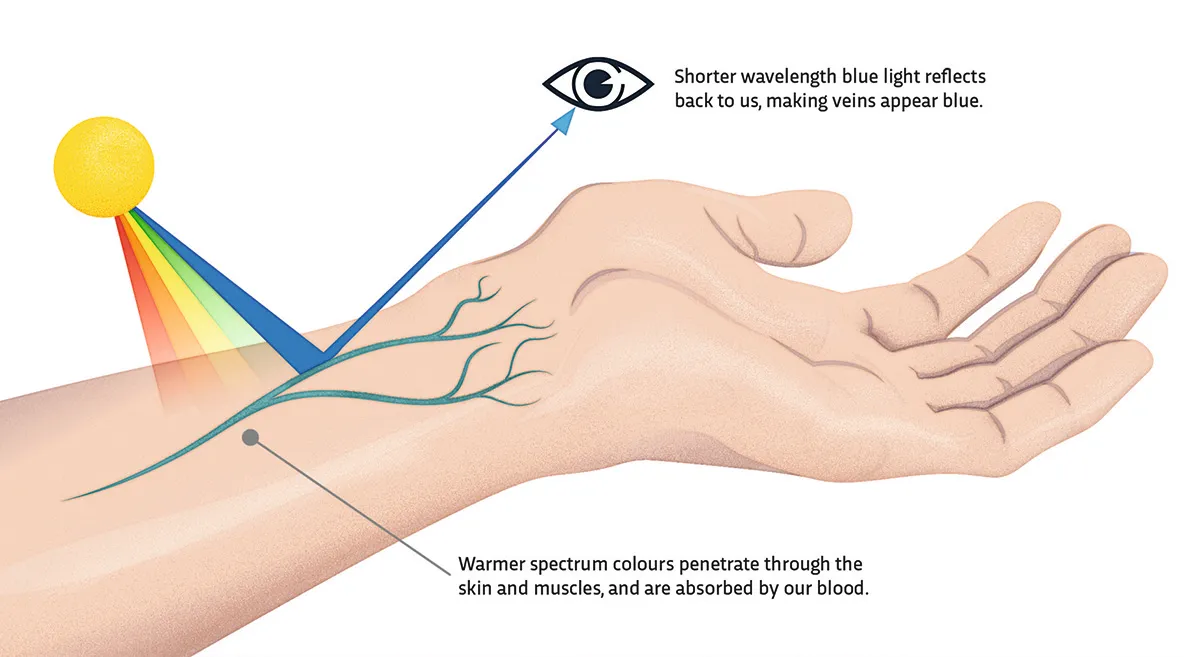Your bloodgets its colouration from red blood cells, which contain haemoglobin – iron-rich molecules that are bright red when carrying oxygen and a darker, duller red when deoxygenated. So why, when you look at the veins in your arm, do they appear to be blue?
The answer lies in the fact that different colours of light have different wavelengths, so they are absorbed and reflected differently when they hit our skin.
Red light has a very long wavelength, so it can travel through the skin relatively easily and is absorbed by the haemoglobin in the blood. Blue light, on the other hand, has a much shorter wavelength and so it is mostly reflected by the skin.

If you shine white light – a mixture of all the different wavelengths – onto your arm, where veins are present, the red light will be absorbed and the blue light will be reflected. This means that the light returning to your eyes will contain more blue than red wavelengths, making the veins look blue compared to the surrounding skin.
Medics sometimes make use of this phenomenon by shining a red or infrared light on the skin to help them locate a vein to administer an injection. Similarly, nightclubs sometimes use blue lights in the toilets to discourage intravenous drug use, by making it hard to see veins through the skin.
Read more:
- Why do people see the same colours differently?
- Why don’t we get woken by our own snoring?
- Why do our eyes come in different colours?
- Why do we hate the sound of our own voices?
Asked by: Susannah Jenkins, Inverness
To submit your questions email us at questions@sciencefocus.com (don't forget to include your name and location)
